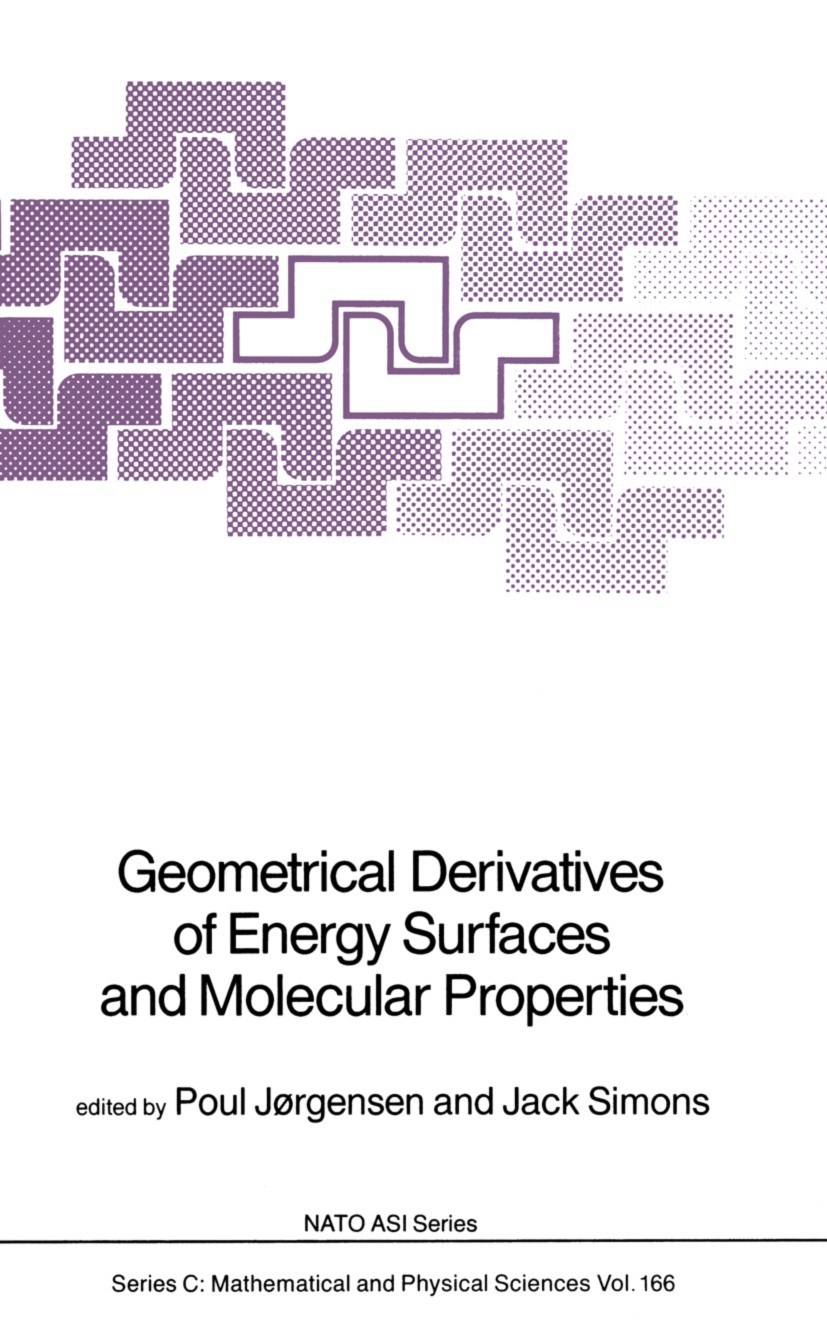| 書目名稱 | Geometrical Derivatives of Energy Surfaces and Molecular Properties | | 編輯 | Poul J?rgensen,Jack Simons | | 視頻video | http://file.papertrans.cn/384/383650/383650.mp4 | | 叢書名稱 | Nato Science Series C: | | 圖書封面 |  | | 描述 | The development and computational implementation of analytical expres- sions for the low-order derivatives of electronic energy surfaces and other molecular properties has undergone rapid growth in recent years. It is now fairly routine for chemists to make use of energy gradient information in locating and identifying stable geometries and transition states. The use of second analytical derivative (Hessian or curvature) expressions is not yet routine, and third and higher energy derivatives as well as property (e.g., dipole moment, polarizability) derivatives are just beginning to be applied to chemical problems. This NATO Advanced Research Workshop focused on analyzing the re- lative merits of various strategies for deriving the requisite analyti- cal expressions, for computing necessary integral derivatives and wave- function parameter derivatives, and for efficiently coding these expres- sions on conventional scalar machines and vector-oriented computers. The participant list contained many scientists who have been instrumen- tal in bringing this field to fruition as well as eminent scientists who have broad knowledge and experience in quantum chemistry in general. | | 出版日期 | Book 1986 | | 關(guān)鍵詞 | Configuration Interaction; H2O2; Transition state; chemistry; cluster; density; development; electron; energ | | 版次 | 1 | | doi | https://doi.org/10.1007/978-94-009-4584-5 | | isbn_softcover | 978-94-010-8537-3 | | isbn_ebook | 978-94-009-4584-5Series ISSN 1389-2185 | | issn_series | 1389-2185 | | copyright | D. Reidel Publishing Company, Dordrecht, Holland 1986 |
The information of publication is updating

|
|
 |Archiver|手機(jī)版|小黑屋|
派博傳思國際
( 京公網(wǎng)安備110108008328)
GMT+8, 2025-10-13 04:55
|Archiver|手機(jī)版|小黑屋|
派博傳思國際
( 京公網(wǎng)安備110108008328)
GMT+8, 2025-10-13 04:55


